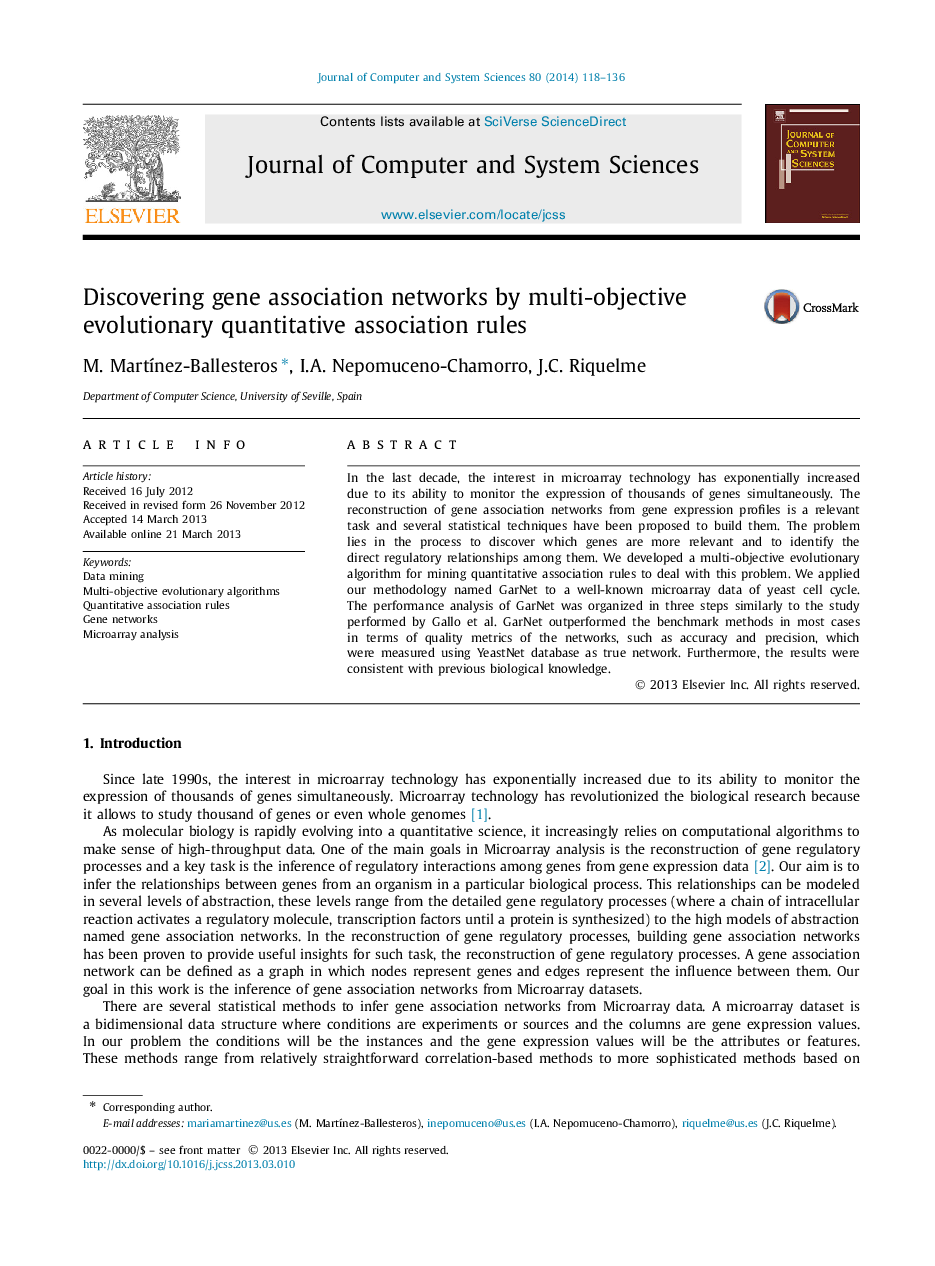| Article ID | Journal | Published Year | Pages | File Type |
|---|---|---|---|---|
| 430022 | Journal of Computer and System Sciences | 2014 | 19 Pages |
•An evolutionary multi-objective approach named GarNet is proposed to discover QAR.•GarNet is used for inferring gene association networks from gene expression profiles.•Garnet outperforms several benchmark methods in terms of precision and accuracy.•The biological relevance has been analyzed using a GO-based enrichment analysis.•The results from cell-cycle yeast data are consistent with the biological knowledge.
In the last decade, the interest in microarray technology has exponentially increased due to its ability to monitor the expression of thousands of genes simultaneously. The reconstruction of gene association networks from gene expression profiles is a relevant task and several statistical techniques have been proposed to build them. The problem lies in the process to discover which genes are more relevant and to identify the direct regulatory relationships among them. We developed a multi-objective evolutionary algorithm for mining quantitative association rules to deal with this problem. We applied our methodology named GarNet to a well-known microarray data of yeast cell cycle. The performance analysis of GarNet was organized in three steps similarly to the study performed by Gallo et al. GarNet outperformed the benchmark methods in most cases in terms of quality metrics of the networks, such as accuracy and precision, which were measured using YeastNet database as true network. Furthermore, the results were consistent with previous biological knowledge.
